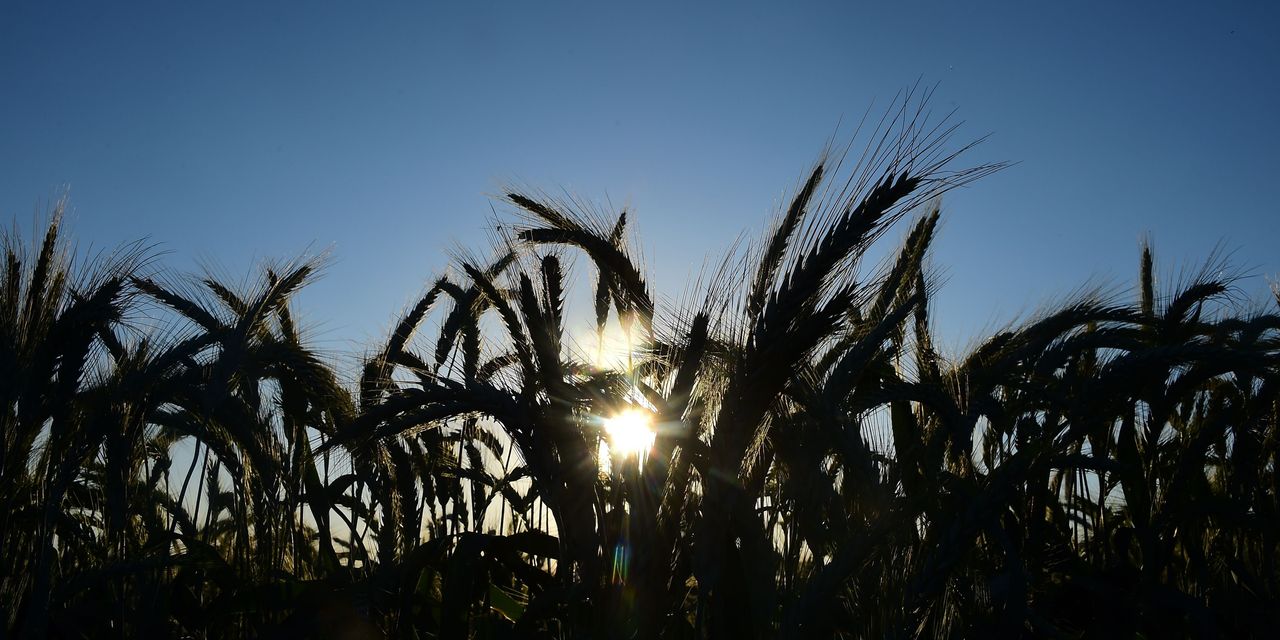Wheat futures have declined so far in 2023, after settling last week at their lowest prices in more than a year, pressured by “abundant” supplies, despite the usual uncertainty surrounding the potential renewal of the Black Sea grain export deal between Russia and Ukraine.
The Black Sea Grain Initiative, brokered by the United Nations and Turkey in July of last year to supply global markets with food and fertilizer as the Russia-Ukraine war led to global shortages and rising prices, is due to expire on May 18. The deal had marked a 60-day renewal on March 18.
Turkey’s state-run news agency Anadolu Agency reported that Turkey, Russia, Ukraine and the U.N. would begin two days of talks on the grain deal Wednesday. The talks would include discussions on the extension of the initiative and the development of plans for the return of merchant ships and their crews stranded in Ukrainian ports due to conflict conditions, the news agency said, citing Turkish authorities.
Since the signing of the initiative in July, the U.N. estimated on March 18 that some 25 million metric tons of grains and foodstuffs had been moved to 45 countries. The deal has also been credited with helping to “calm global food prices, which reached vertiginous highs in March 2022,” the U.N. said.
“While Russia is currently holding to its pattern of waiting until the last minute to confirm its agreement to a renewal, the fact remains that for every one bushel of wheat Ukraine has to export, Russia has four bushels,” Sal Gilbertie, president and chief investment officer at Teucrium Trading, told MarketWatch. So, a renewal of the grain deal “benefits Russia more than it benefits Ukraine.”
““…the fact remains that for every one bushel of wheat Ukraine has to export, Russia has four bushels.” ”
“Russia loves to bargain and bluster before renewing the U.N. grain deal, but Russia benefits more than Ukraine from the deal and it can always agree to a deal and then degrade Ukraine’s ability to export by attacking Ukrainian export facilities, which it has no hesitation in doing thus far,” said Gilbertie. “That would be a win-win for Russia.”
Overall, wheat has been pressured by “abundant supply availability” from Russia where wheat inventories are currently running almost 80% higher than the five-year average,” as well as the need for farmers to make room for this year’s crop, said Gilbertie, with the harvest set to begin several weeks from now.
Russian wheat export prices are “the lowest in the world right now” because Russia is “desperate to move its old inventories out in order to make room for this year’s large harvest,” he said.
On Wednesday, the most-active July soft red winter (SRW) wheat contract
WN23,
traded in Chicago settled at $6.41 1/4 a bushel, down 2 1/4 cents, or nearly 0.4%. The settlement was the lowest since May 3, according to Dow Jones Market Data. Year to date, wheat futures have lost about 19%. They hit a a 52-week settlement low of $6.09 1/4 on May 2. SRW wheat has excellent milling and baking characteristics for crackers and pretzels, according to the Nebraska Wheat Board website.
Most active July hard red winter(HRW) wheat futures
KWN23,
ended at $8.55 1/4 a bushel, down 0.1%, or a penny, Wednesday after hitting a 52-week closing low of $7.71 1/4 on May 2. Prices are down about 3.7% year to date. HRW wheat is used mostly used for bread, as well as all-purpose flour,.
Given that agricultural futures are basically weather derivatives, and the weather across the U.S. Plains has reduced the production potential for HRW and SRW, that created what Darin Newsom, Barchart senior market analyst, referred to as a “rubber band disposition.” That means the noncommercial and commercial sides of the market were being pulled in opposite directions, he said.
“When the rubber band breaks, it usually snaps back to its base,” said Newsom, and in the case of commodities, fundamentals tend to “win in the end.” He pointed out that for now, the Chicago SRW wheat market is fundamentally bearish as indicated by its futures price spreads, while Kansas City HRW wheat has rallied from its recent low on May 2.
The Agriculture Department will release its monthly World Agricultural Supply and Demand Estimates report on Friday, potentially giving the markets for wheat and other grains their next market-moving piece of news.
“This is one of the reports folks get all worked up over each year,” said Newsom. But “I think it is dramatically overhyped.”
Still, Newsom said he’s expecting to see old-crop corn and soybean export projections reduced.
Gilbertie, meanwhile, said that as far as potential surprises in the report, he’d look at the 2023-to-2024 crop-year forecast.
“If the USDA does not bump South American production on all levels up to at least trend line,” meaning record high production of both corn and beans, then markets are likely to be surprised.
“May is a big report so anything an happen,” said Gilbertie.
Read the full article here








